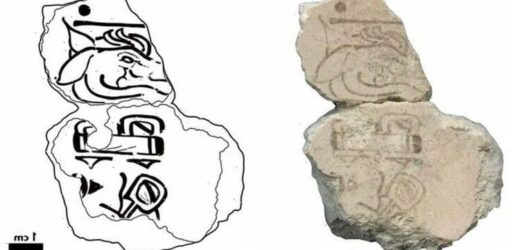Historian discusses Mayan ‘disappearance’
We use your sign-up to provide content in ways you’ve consented to and to improve our understanding of you. This may include adverts from us and 3rd parties based on our understanding. You can unsubscribe at any time. More info
The inscribed mural fragments from the newly-identified calendar were uncovered from the remains of the Temple of Las Pinturas (“the paintings”) in the San Bartolo pyramid complex in northern Guatemala. The site is best known for different murals, intricate paintings interpreted as depicting both humans and various deities from Maya mythology, with subjects including scenes from life of the maize god, the coronation of a Maya monarch, and four kings performing blood sacrifices. These murals have been dated back to around 100 BC, some 200 years after the construction is thought to have commenced on the base on the pyramid, but around 150 years before the complex was completed.
In their study, Mesoamerican art and writing expert Professor David Stuart of University of Texas at Austin and his colleagues analysed 11 of the hieroglyphic-inscribed wall fragments unearthed from the Las Pinturas site between 2002 and 2012.
Radiocarbon dating of twelve samples of carbonised wood found in the surrounding layers of sediment allowed the team to date the fragments to between 300 and 200 BC, making them around 150 years older than the other murals from the San Bartolo complex.
The researchers noted that one of the fragments in particular appears to depict the date “7 Deer” in the 260-day ritual calendar known to have been used across Mesoamerica.
The glyph features the number seven in bar-and-dot notation, positioned over the outline of a deer’s head.


In the so-called “Classic” period that post-dated the construction of the San Bartolo complex, Maya scribes rarely used the deer glyph.
This, Prof. Stuart and colleagues said, suggests that this particular fragment hails from an early stage in Maya script development.
As their script developed, a phonetic hand sign eventually emerged to replace the deer glyph.
According to the team, the fragments are the product of a mature art and writing tradition operating in the region in the third century BC.


Given this, they added, the Maya calendar was, in all probability, in use for a long time before the mural was painted in 300–200 B.
Professor Stuart and his colleagues said: “The evidence now suggests that we can no longer single out one region of Mesoamerica, such as Oaxaca as, ‘the’ point of origin for scripts or calendrical record keeping.
“The situation would point to an even earlier origin of the calendar sometime during the Middle Preclassic, if not before, although the evidence remains indirect.”
The Middle Preclassic period spanned from 1,000–400 BC.
DON’T MISS:
Bulgaria and Greece break EU ranks with new nuclear plan [REPORT]
Japan tipped to join AUKUS as hypersonic missile deal to terrify Putin [INSIGHT]
Solar storm warning: ‘Radiation risk’ as ‘major’ event rocks Earth [ANALYSIS]

The “Maya calendar” is in fact a series of calendar systems employing several counts of different lengths.
These included the 260-day “Tzolkʼin” cycle and the 365-day Haabʼ count that together form a roughly 52-year-long cycle called the “Calendar Round”.
To identify dates over longer periods of time, the Maya also used a linear “Long Count” calendar which marks the number of days since a mythical creation date which translates to August 11, 3114 BC in an extrapolated Gregorian calendar.
It was the elapsing of the 13th “Bʼakʼtun” — a roughly 394-year-long subdivision of this calendar — that underpinned pseudoscientific claims that the world was going to end at sometime around December 21, 2012.
According to various archaeologists, the Maya did not actually ascribe any portents of doom to this date, and would have treated it just as we regard the passing of, say, a new century.
Instead, the notion appears to have been derived from a misinterpretation of the partially-damaged inscription on a tablet found at the Tortuguero dig site in Mexico.
In fact, Professor Stuart has previously concluded that this text instead was referring ahead to the end of the 13th Bʼakʼtun as a way to better contextualise an event in its present.
This rhetorical flourish, known from other Maya inscriptions, might be considered the opposite of how we might, for example, have written in 1969 that Concorde’s maiden flight occurred some 65 years after the Wright Brothers conducted the first powered flight.
The Maya calendar system overall shares many similarities with calendars employed by other Mesoamerican civilisations, including those of the earlier Olmec and Zapotec peoples and the later Aztec and Mixtec cultures.
The full findings of the new study were published in the journal Science Advances.
Source: Read Full Article


